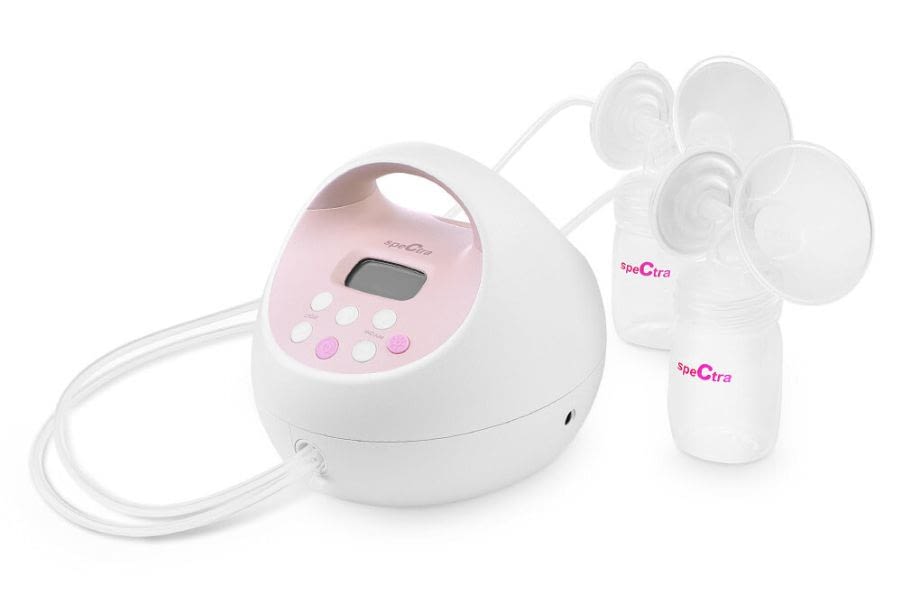Breastfeeding is a personal and unique journey for every mother and baby. It is undoubtedly a beautiful experience, but it can also bring challenges and concerns for the mother. One of the concerns is, “Why does my breast milk look watery?”
A mother needs to know what causes a watery appearance in breast milk and whether it affects the baby’s health. Let’s dive deeper into the topic and clarify some misconceptions about the appearance of breast milk.
Is watery breast milk good for baby?
Yes. Your first milk can be thin or become more watery in texture due to several factors, including the amount of time a mother lasts, nursed or pumped, the temperature of the milk, and even the mother’s diet.
While watery breast milk might not seem as rich as fatty milk, it still contains the same beneficial proteins, enzymes, and antibodies that can keep your baby healthy. It is even easier for your little one to digest.
Despite its distinct appearance, thin breast milk is normal, equally valuable, and nourishing for your baby as high-fat milk expressed during later nursing sessions.
Related: Can Warmed Breast Milk Be Refrigerated Again?
7 Possible Reasons: Why does my breast milk look watery?
The appearance of breast milk can vary from mother to mother and even from feeding to feeding. It can range from being thick and creamy to watery in appearance. Breast milk is a dynamic and complex substance that adapts to the baby’s needs, from the content of nutrients to antibodies. Furthermore, the watery appearance of thin breast milk can be attributed to the following factors.
Milk Volume
When a mother’s breast produces more milk than her baby needs or consumes at a given time, her breast milk may appear watery. This situation often arises when the baby cannot feed as rapidly as the mother produces, resulting in an accumulation of leftover milk that appears thin and watery.
Fat Content
The pumped milk looks watery due to its fat content, which can also change due to the evolving nutritional requirements of a growing baby. In the initial months, breast milk tends to contain more fatty milk, while it becomes progressively more diluted in later months.
Temperature
Hot weather or heat exposure can cause a mother’s breastmilk to look thinner or more watery than usual. This is because when the temperature increases, so do its components like fats, proteins, and other nutrients that affect consistency.
Time of Feeding
If a baby feeds for too long or too often, the fat in breast milk tends to separate and make the breast milk look watery. It can also indicate an oversupply issue where the mother produces more milk than necessary.
For instance, if babies feed frequently, the appearance of breast milk changes, and they can obtain higher fat hindmilk. On the other hand, a prolonged break between nursing or pumping sessions can increase lactose-rich foremilk and decrease breast milk fat content.
The Position of Nursing
Lastly, the nursing position can affect the flow rate, changing the milk’s appearance. A fast flow rate might result in thinner-looking breastmilk, whereas a slow flow results in a thicker, more creamy appearance.
Diet of a breastfeeding mom
Hydration and diet also affect the appearance of breast milk. Drinking enough fluids such as the Best Electrolyte Drink for Breastfeeding can help to maintain hydration levels, leading to a higher volume of milk production. As a result, the human milk may appear more watery. Similarly, incorporating more plant-based food into the diet, particularly leafy greens, can lead to a more watery foremilk.
At different times of day
Lastly, the appearance of pumped breast milk can also vary throughout the day. As the day progresses, the breast milk may appear more watery due to the accumulation of low-fat milk. This can lead to lactose overload, low bowel movements, childhood obesity, wet diapers, and an increase in the baby’s weight gain. This is because it takes longer for the breast emptying, making the hindmilk less accessible for the baby.

Watery Breast Milk: Things That Affect Breast Milk Color
Breast milk color may vary due to factors such as dietary habits, stress levels, and medication intake. In case of any unexpected alterations in breast milk color, it is advisable to consult a lactation specialist who can assess the situation and ensure your and your baby’s well-being by identifying the underlying cause.
Blue or Clear
When a mother first begins producing milk, it can range from white to bluish-clear in color. This is because the milk contains little to no fat. It is known as foremilk and typically has a lower caloric content than your baby needs in the early days until your milk supply is established.
Is it ok that my breast milk is watery? Yes, it is perfectly normal for breast milk to be watery as breast milk’s composition changes throughout the day and from feeding to feeding. For example, foremilk is typically thinner than hindmilk and sometimes has a bluish tint that may give the impression of being more watery than other times.
Watery breast milk can also be caused by fatty acid deficiency (FAD), which is linked to inadequate nutrition and can lead to poor weight gain in your breastfed babies.
Additionally, ensure you follow all instructions for using a breast pump. Cleaning and sterilizing all parts after every use is essential, as this can help reduce the risk of contamination and infections.
Yellow or Creamy
The fat content increases as your body produces more milk, and the color may change to yellow or creamy. This type of milk, known as hindmilk, is higher in calories and fats, which can help promote healthy weight gain in your baby.
Greenish-Gray
Occasionally, you may notice a greenish-gray color in your breast milk. This is usually due to increased white blood cells, which a bacterial or viral infection in the mother can cause. In this case, it’s essential to speak to get checked for any infections and illnesses that could be causing this color change.
Orange
If you notice an orange tint in your breast milk, it is likely due to carotenoids, naturally occurring pigments in many fruits and vegetables. Eating a balanced diet of fresh foods can help ensure that your breast milk remains a healthy color.
Brown or Black
The presence of bilirubin, a byproduct of the breakdown of red blood cells, typically causes brown or black breast milk. This can indicate an underlying health condition, such as liver or gallbladder disease, and should be discussed with your healthcare provider.
A healthy breastfeeding journey should include regular monitoring of the color, smell, and taste of your breast milk. This can help you identify any changes that may indicate a health concern and ensure your baby gets the necessary nutrients.
Read Also: How to Combine Breastfeeding and Pumping.
Common Reasons Behind Change in Breast Milk Colour
- The time of day: Breast milk may appear more yellow or creamy in the morning and more watery at night. This is because milk production decreases as the day progresses, and more low-fat milk accumulates.
- The mother’s diet: A mother’s diet can affect the color of her breast milk. Eating foods high in beta-carotene, such as sweet potatoes and carrots, can give the milk a slightly yellowish hue.
- The mother’s hydration: Dehydration can cause breast milk to appear more concentrated and darker in color. Nursing mothers must stay hydrated to maintain healthy milk production and appearance.
- The mother’s medications: Some can be passed into the breast milk, giving it a slightly different color or consistency. If you take any medication while breastfeeding, talk to your doctor about how it may affect your milk.
- The mother’s body chemistry: A mother’s body chemistry can affect the color of her breast milk. Different levels of hormones or other substances in a mother’s body can cause variations in the appearance of her milk, from thin and watery to thick and yellow.
In most cases, changes in the color of breast milk are perfectly normal and should not cause any concern.
It’s normal for breast milk to vary in consistency and color. Yet, if you notice a significant difference or any unusual traits for an extended period, you must consult your doctor for further guidance. Don’t hesitate to seek professional advice to ensure both you and your baby continue to thrive.

Is breast milk very watery all of a sudden? 10 Tips for Making Breast Milk Fewer Watery
- Nurse on just one side for each feeding.
- Try to nurse your baby more frequently and for more extended periods.
- Make sure you’re getting enough rest and eating a balanced diet.
- Pump or hand express if it’s been longer between feedings or if you need to produce more hindmilk.
- Vary the nursing positions to help stimulate milk production.
- Massage your breasts and apply warm compresses before breastfeeding or pumping.
- Pump from both breasts at the same time, if possible.
- Avoid using pacifiers and bottles during the first few weeks of breastfeeding unless medically necessary.
- Ensure you follow all breast pump instructions, including cleaning and sterilizing parts after every use.
- Talk to your healthcare provider about issues with watery breast milk or foremilk/hindmilk imbalance.
How often should my baby be breastfeeding?
The frequency of breastfeeding will depend on various factors, such as the age and size of your baby. Generally speaking, the American Academy of Pediatrics recommends exclusive breastfeeding for 1-6 months and then continuing to breastfeed for at least 1 year or as long as mutually desired by the mother and baby.
Newborns need between 8-12 feedings per day, while older babies may feed less frequently. It’s essential to listen to your baby and their cues so that you can adjust feeding times as needed.
Ensuring the best health for both mother and baby is essential, and good nutrition is crucial. Seeking advice from a healthcare professional can provide additional guidance on properly caring for your little one.
What is a foremilk and hindmilk imbalance?
A foremilk and hindmilk imbalance, sometimes called an “overactive letdown reflex,” occurs when a mother produces more foremilk and insufficient hindmilk. Foremilk is the milk that a mother’s body produces first when her baby begins nursing, and it has a thinner consistency than the hindmilk that comes later in the feeding.
Too much foremilk can cause a baby to become overly full or gassy and may lead to poor weight gain or dehydration.
What happens if the baby gets too much watery milk?
A baby getting too much watery milk can experience lactose overload. In this case, your baby may show signs of gassiness, dry mouth, problems digesting milk sugars, spitting up, and having green or foamy poop.
Also, monitor the amount of watery milk you give your baby and adjust it if necessary. It’s best to give your baby a combination of breast milk or formula and appropriate amounts of plain water throughout the day for hydration.
Learn how to assess your baby’s health and development by keeping track of these three critical factors while breastfeeding:
- Trouble gaining weight
- Look for enough wet diapers per day
- Monitor your baby’s behavior
Conclusion: why is my breastmilk so watery?
In conclusion, the watery appearance of breast milk is a regular occurrence, and it does not reflect its nutritional value. Instead, it is influenced by different factors such as the baby’s feeding patterns, hydration, diet, and time of the day. Understanding these factors and how they affect breast milk’s appearance can help mothers identify any possible concerns and provide the best nutrition for their babies. Remember, breastfeeding is a journey that requires patience, and it is essential to seek help and support from a lactation consultant if there are any persistent concerns.
Parents Also Ask
Why is my breast milk watery in the morning?
Breast milk looks watery in the morning for several reasons, such as a decrease in the body’s level of prolactin overnight, which helps regulate milk production. Also, the mother may have fasted for a more extended period, leading to lower fat levels in the breast milk.
1 Visit today





